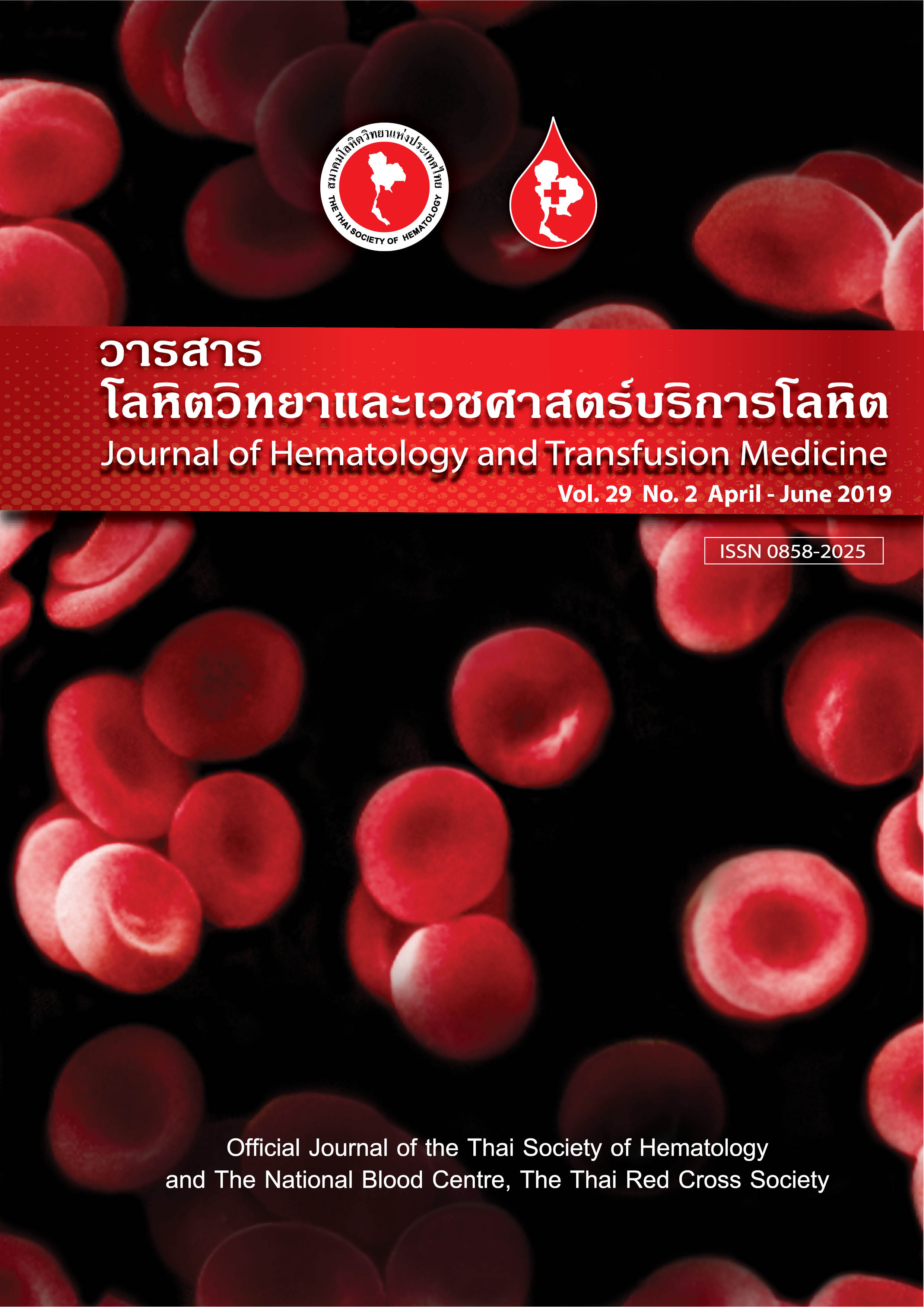การทำ Viral inactivation และ viral removal ในผลิตภัณฑ์จากพลาสมา
Keywords:
-Abstract
-
Downloads
References
Harvey GK, David JA. Plasma fractionation and fractionation products. In : Harvey GK, David JA, editors. Mollison’s blood transfusion in clinical medicine, 12nd ed. New Jersey: Wiley-Blackwell. 2014:846-72.
History of plasma fractionation [Internet]. Connecticut: The Marketing
Research Bureau. c2018- [cited 2018 Apr 8]. Available from: https://marketingresearchbureau.com/plasma-industry/history-of-plasma-fractionation/
Mousavi HK, Ghasemzadeh M. Implementation of plasma fractionation
in biological medicines production. Iran J Biotechnol. 2016;14:213-20.
World Health Organization. Guidelines on viral inactivation and removal procedures intended to assure the viral safety of human blood plasma products. Geneva: World Health Organization; 2004.
Fokke T. Viral safety of blood and plasma products. Amsterdam: Gildeprint BV; 2007.
Nazari S, Jalili MA, Shahabi M, Tafti MF, Nasiri S, Mouradi M, et al. Virus reduction of human plasma-derived biological medicines.
Jundishapur J Nat Pharm Prod. 2017;12:e13943. doi:10.5812/jjnpp.13943.
Rezvan H, Motallebi Z, Jalili MA, Hosseini MK, Pourfathollah AA. Safety of blood and plasma derivatives: Pathogen reducing technologies. Med J Islam Repub Iran. 2006;20:86-92.
United States Army Natick Research and Development Command Natick. Thermal inactivation of viruses. Massachusetts: United States Army Natick Research and Development Command Natick; 1977.
Nathan JR. Pathogen reduction of blood components and plasma derivatives. In: Toby LS, Jeffrey M, Edward LS, Bjarte GS, Ronald GS, editors. Rossi’s Principles of Transfusion Medicine. New Jersey: John Wiley & Sons; 2016. p. 632-641.
Viral Inactivation of Blood Products for Haemophilia Therapy up to 1985[Internet]. Edinburgh: The Penrose Inquiry. c2015 - [cited 2018 Apr 19]. Availavle from: http://www.penroseinquiry.org.uk/finalreport/text/354876_chapter_23.html
Gröner A, Broumis C, Fang R, Nowak T, Popp B, Schäfer W, et al. Effective inactivation of a wide range of viruses by pasteurization. Transfusion. 2018;58:41-51.
Albrecht G, Wolfram S, Thomas N. Emerging viruses are inactivated
by pasteurization. Blood. 2004;104:4111.
Kim IS, Choi YW, Kang Y, Sung HM, Shin JS. Dry-heat treatment process for enhancing viral safety of an antihemophilic factor VIII concentrate prepared from human plasma. J Microbiol Biotechnol. 2008;18:997-1003.
Peter H, Bjarte GS. The use of solvent/detergent treatment in pathogen reduction of plasma. Transfus Med Hemother. 2011;38:65-70.
Roberts PL. Virus inactivation by solvent/detergent treatment using Triton X-100 in a high purity factor VIII. Biologicals. 2008;36:330-5
Joe M, Heather M. Adjusting pH during viral inactivation automating
the procedure via a single-use mixing platform. In: John S, editor. The genetic engineering & biotechnology news. New York: Mary Ann Liebert, Inc; 2013.
Dichtelmüller HO, Biesert L, Fabbrizzi F, Falbo A, Flechsig E, Gröner A, et al. Contribution to safety of immunoglobulin and albumin from virus partitioning and inactivation by cold ethanol fractionation. Transfusion. 2011;51:1412-30.
Burnouf T, Burnouf-Radosevich M. Strategy of virus removal / inactivation of plasma-derived products : interest of nanofiltration as a new virus elimination method. In: Kobayashi T, Kitagawa Y, Okumura K, editors. Animal cell technology : basic & applied aspects: proceedings of the sixth international meeting of the Japanese Association for Animal Cell Technology (9-12 November 1993; Nagoya, Japan). Dordrecht: Springer; 1993. p. 17-27.



